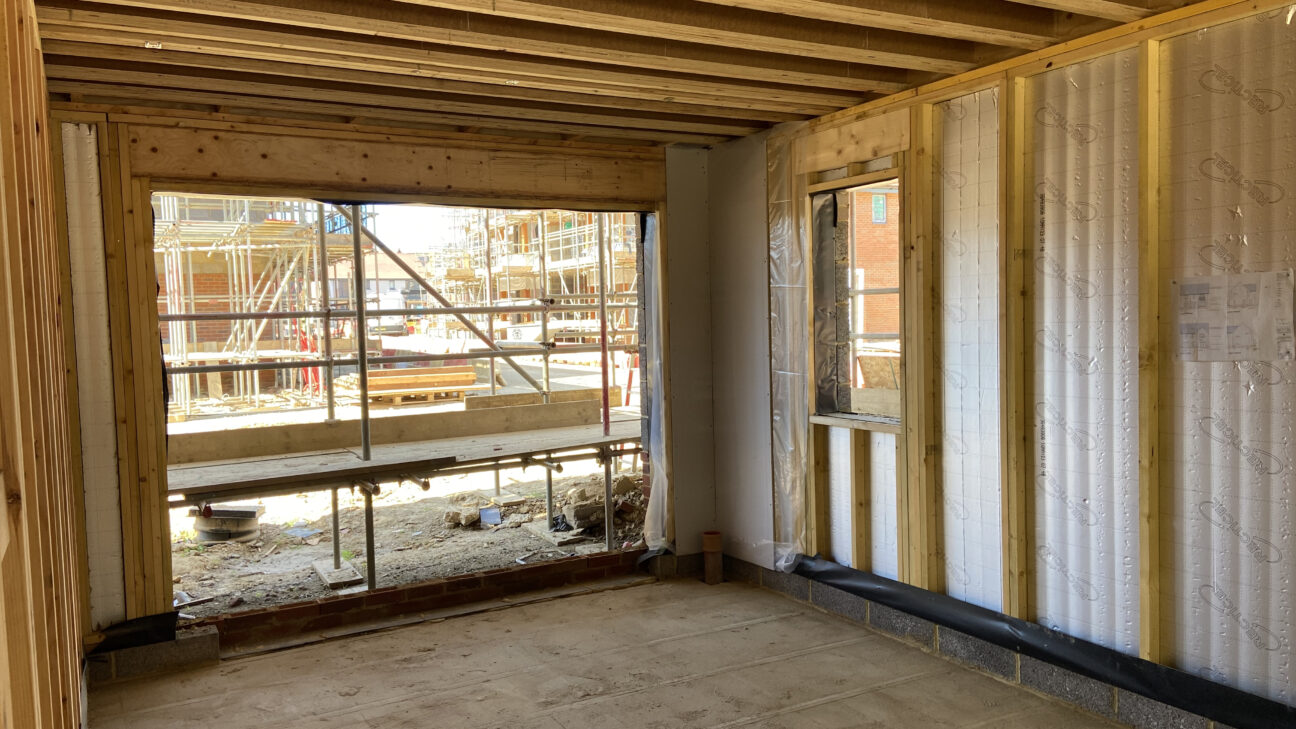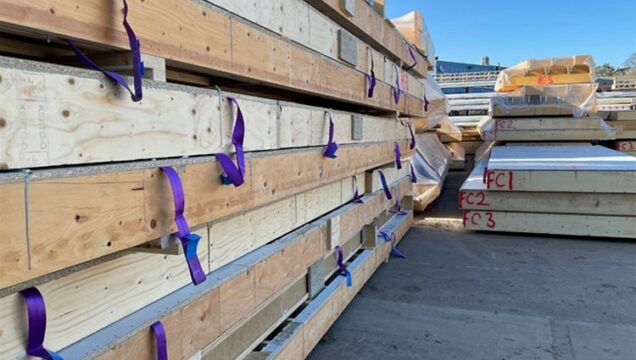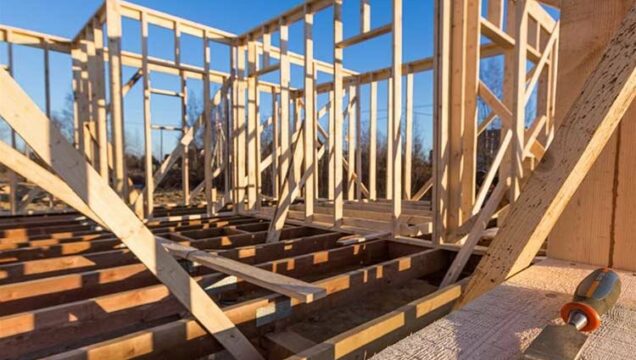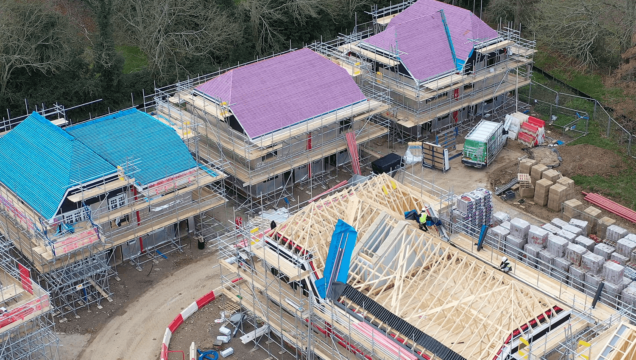

In October 2021, the UK government set out their plan to reach net zero by 2050. Achieving this will require cooperation from all industries, including construction.
In particular, the construction industry will have to reckon with embodied carbon–carbon emissions created through the entire life cycle of buildings, from construction to demolition.
But why is embodied carbon a problem, and how could timber framed housing bring the UK closer to its sustainability targets?
//What is Embodied Carbon?
We know that the construction industry has a sustainability problem. Manufacturing is one of the UK’s biggest carbon emitters, and concrete is one of the main culprits. At least 8% of global carbon emissions come from cement alone; 600kg of carbon is released for every tonne produced.
However, house builders and contractors can reduce overall emissions from the building process by considering the whole-life emissions of the process: this is called embodied carbon.
Embodied carbon is a broad category that includes all of the emissions created by the build process, from the materials used to the construction processes and then the eventual life of the building itself.
By considering the embodied carbon emissions of a building project, developers can look for areas of improvement and ultimately reduce the environmental impact of their building projects. Considering ‘whole life’ emissions is crucial for achieving net-zero aims, as embodied energy is expected to reach 50% of building lifecycle carbon emissions by 2050.
//Why Choose Timber Framed Housing?
Choosing timber over cement as a manufacturing material can significantly impact the embodied carbon of a building. As a result, countries like New Zealand, France and Holland are legislating the use of timber in buildings, with New Zealand having identified a ‘timber-first’ policy as a critical way of reducing carbon emissions.
Firstly, 50% of the dry weight of timber is carbon that has been removed from the atmosphere, making it a far more sustainable building material to start with. Additionally, the timber-frame construction process produces far less carbon than a masonry process–218 kg CO2e/m² versus 353 kg CO2e/m², a reduction of about 40%.
However, it’s not just in the construction process that timber-framed housing can produce lower emissions. Timber-framed houses also beat concrete construction when it comes to the embodied carbon over a home’s entire lifecycle. When timber-frame elements are used in a standard four-bed detached home, they can save five tons of CO2e when compared to blockwork.
Aside from producing less embodied carbon, there are further environmental benefits to timber-framed housing, including lower transport emissions, less energy and time spent on construction, plus timber’s ability to capture and store carbon over its lifetime.
//Contact us to find out more
With over 40 years of experience, Pinewood Structures are a trusted name amongst house builders and contractors alike. With our pragmatic approach to timber frame buildings solutions, we stay one step ahead of the ever changing UK Building Regulations and can be trusted to deliver intelligent solutions for your housing project.


